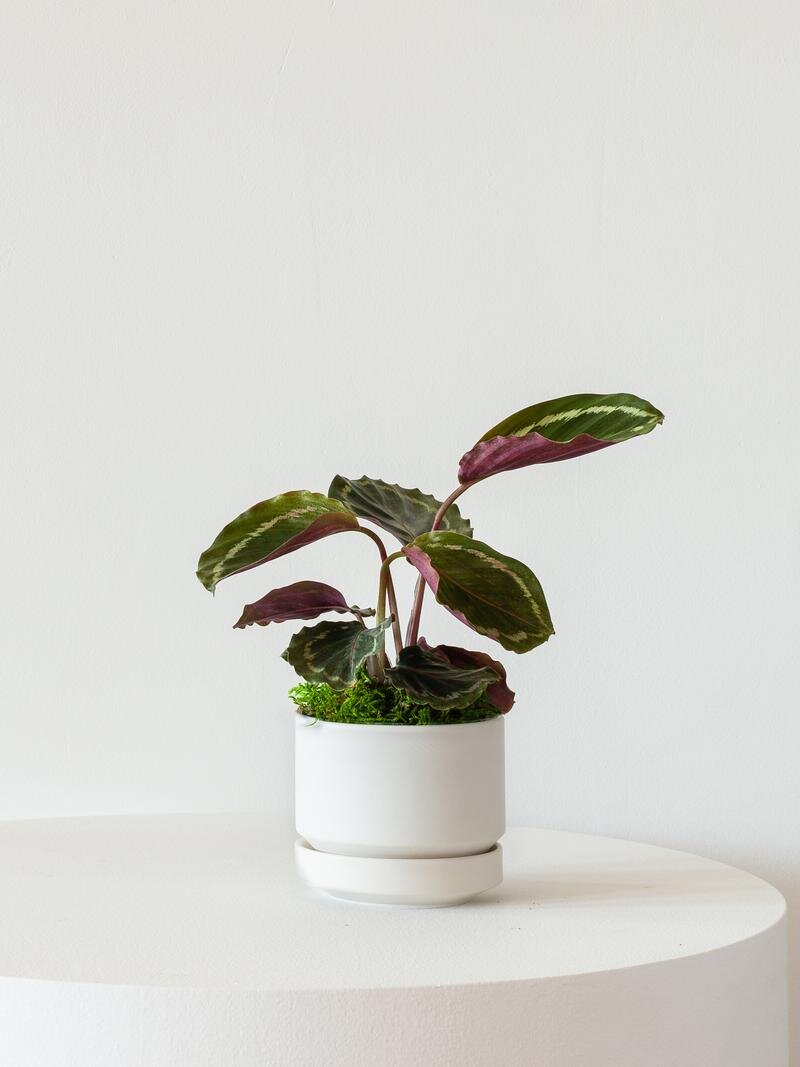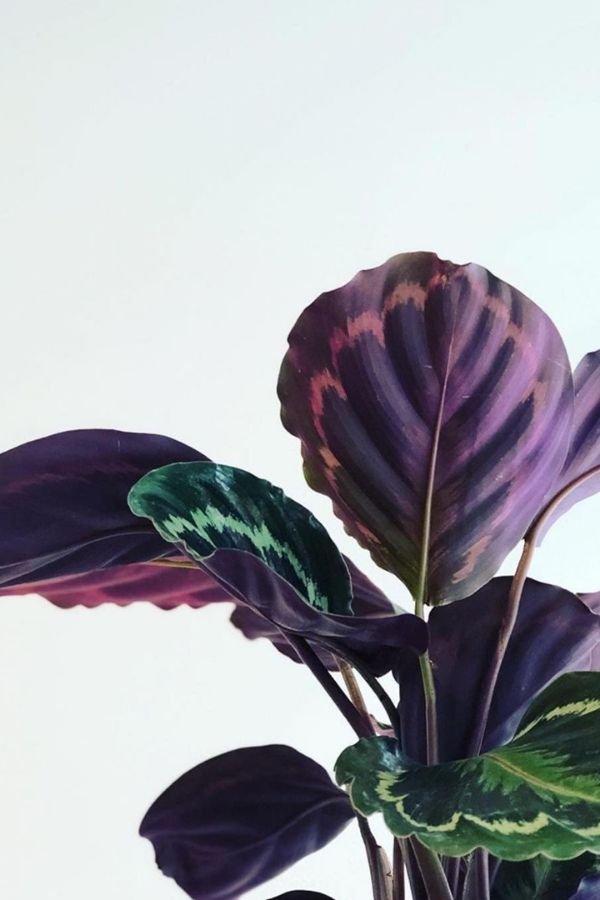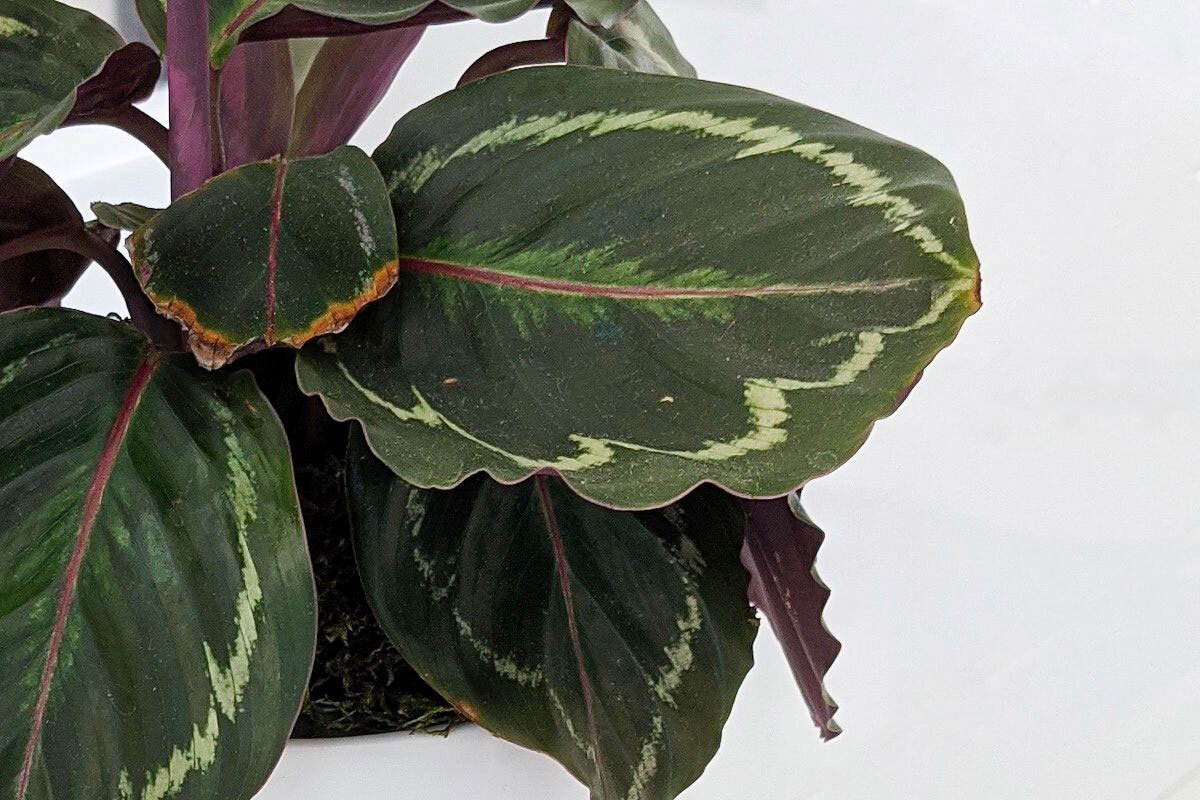Let's be real here. The Calathea is a difficult one in terms of care. It needs constant humidity and warmth. Here are the most common issues you'll experience with plants in the maranta and prayer plant families.
What causes Calatheas’ leaves to curl?
Calatheas are humidity-loving, tropical plants. In fact, while this plant is generally easy to care for, it often requires multiple waterings a week (or more in the summer!) to give it the proper moisture that it craves. In most cases, Calatheas’ leaves curl when their soil is excessively dry, though there could be a few other minor reasons that are causing your plant’s leaves to curl.
How to fix curling leaves on a Calathea
Easy! Give it a good drink of water—but from the bottom up. Soak your plant in water by placing it in a deep dish, bowl, sink or bathtub with a few inches of water. You may leave it soaking anywhere from a few hours to 24 hours. After a day or so, you will see how the leaves magically unfurl!
This method of deep watering is called “bottom watering” and Calatheas aren’t the only plants who love it! Learn more about the benefits of bottom watering here.
Water Quality
If you’ve thoroughly soaked your Calathea but it’s still showing signs of curling leaves, consider using filtered water. Tap water often contains salts, chlorine, minerals, and fluoride, which can accumulate in the soil and lead to leaf tip burning, browning, and curling. To address this, try using filtered water or letting your tap water sit in an open container or sink overnight to reduce chlorine content.
Temperature & Humidity
Since the Calathea is a tropical plant, it thrives in high humidity. If your environment lacks humidity, you can increase it by misting the leaves regularly, using a pebble tray, or placing a humidifier nearby.
Temperature is also essential for your Calathea's well-being. Ensure that it is not placed in a drafty area or exposed to heating and cooling vents. Cold temperatures or excessive dryness from constant warm airflow can also cause the leaves to curl.
Other problems with Calatheas
Calatheas can show a few different signs of distress:
Brown Edges
Brown edges appear when the air is too dry for your plant. Add misting to your watering routine or keep it on a bed of rocks and shallow water to add humidity. You can also trim the leaves, either removing the entire leaf at the stem’s base, or trimming the leaf itself, following the natural shape to get the plant and/or its leaves looking sharp again!
Droopy Leaves
Tour plant is getting too much water. Allow the soil to air out or change the soil completely to decrease chances of root rot.
Ready for more? Read our full guide on Calathea care, including tips for propagation, repotting, and more.
Calathea Medallion
A stunning prayer plant with a deep color palette of leaves painted by nature.










